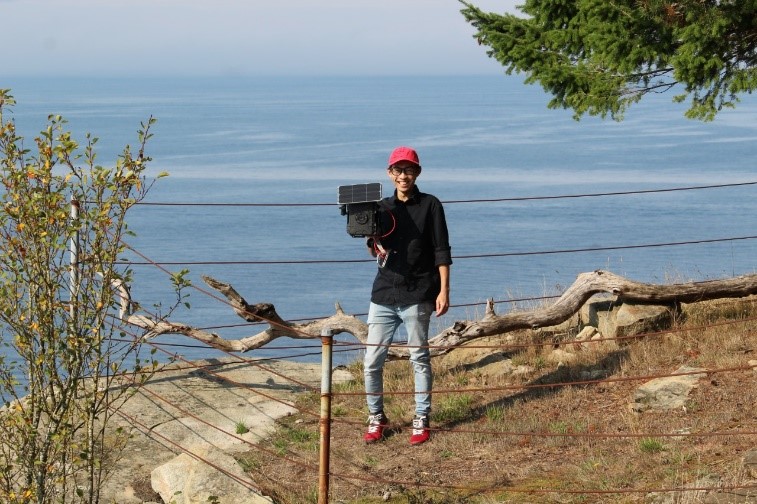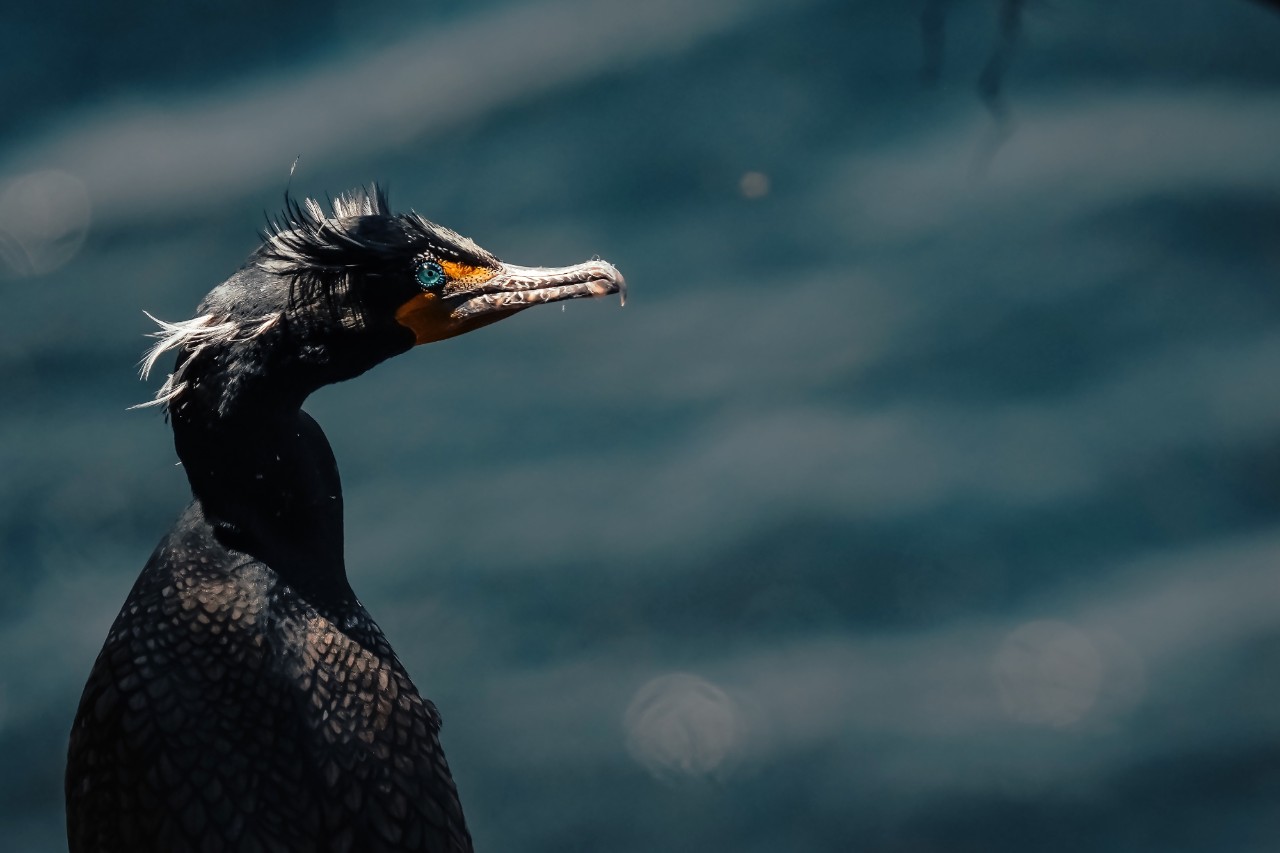Macus Ong is an international student in the BCIT and SFU Master of Science (MSc) in Ecological Restoration program with a passion for photography and to teach others about the environment through his work. While working on his MSc Applied Research Project, Macus photographed a stunning cormorant. He entered the photo in the BBC Wildlife Magazine and was awarded Runner Up in the November issue.
Macus started photography in 2009 when he was doing his Bachelor of Science program. He combined his talent in photography and interest in the environment to help inform the public and the city management about the significance of conserving Double-crested Cormorants. At the same time, he devised proper bridge management that does not exclude the birds during their breeding season.
Macus took this picture on his way to Gabriola Island to install a remote GoPro camera on the sea cliff for his MSc project. His research combines photogrammetry sampling with traditional field observation to seek understanding of Double-crested Cormorants nesting behavior, especially in urban bridge settings. The research aims to find out the behavior and success of the birds during their breeding season in multiple location settings in Vancouver. Due to anthropogenic disturbances, there is a shift in their nesting behavior from the natural rock and islands colonies to urban colonies where they are building nests under the Ironworkers Memorial Second Narrows Crossing bridge, Granville Bridge, and Burrard Bridge.

The MSc in Ecological Restoration program is Canada’s first master’s program specializing in Ecological Restoration and is offered as a joint program between British Columbia Institute of Technology (BCIT) and Simon Fraser University (SFU). The MSc in Ecological Restoration combines the strong technical and applied (experiential) knowledge at BCIT with SFU’s fundamental (contextual) basic science and community engagement expertise. The product is a unique joint-degree program that will fundamentally advance both the practice and science of ecological restoration.
Photo by Marine Randon
